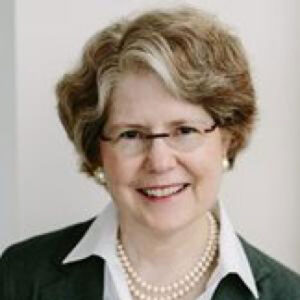Community College Bias? Study of 3,000 CUNY Educators Shows Skewed Views of Students & Their Credits
Logue: New survey finds huge difference of opinion in how faculty at 2- and 4-year CUNY schools view students who transfer — & the credits they bring.

Get stories like this delivered straight to your inbox. Sign up for The 74 Newsletter
The ways college faculty think and feel about transfer students can hinder their success and contribute to education inequity. More generally, what professors and administrators think about students transferring between their colleges can provide a window into how faculty shape higher education in the United States.
College students have become extremely mobile, with about three out of every eight eventually transferring between schools. Nationally, over one quarter of new bachelor’s recipients began at a different college.
The most common type of transfer occurs between associate programs at community colleges and bachelor’s programs at four-year institutions — known as vertical transfers. Jobs increasingly require bachelor’s degrees, and 80% of community college students wish to obtain at least a bachelor’s, requiring a transfer. Still, six years later, only 11% have attained one.
Many challenges are associated with the transfer process, such as students having received inadequate academic preparation for their new colleges or bachelor’s programs being unwilling to accept their credits. Community colleges have a higher percentage of students from poor and racially/ethnically underrepresented groups than do bachelor’s colleges. Therefore, anything that makes it more difficult for a student to receive a bachelor’s degree by beginning their postsecondary education at a community college and then transferring disproportionately harms students from those groups, increasing higher education inequity.
In general, it is community college faculty who are responsible for academic preparation of transfer students and faculty at four-year colleges who make decisions about accepting credit for community college work. These two faculty bodies may see the value of those credits, and of the students themselves, very differently.
Despite the important roles that faculty play in transfer, research about them has been limited. We conducted a survey of 3,871 faculty at The City University of New York’s 20 undergraduate colleges, which range in selectivity. There are about 20,000 internal transfer students per year.
The survey included questions concerning faculty transfer knowledge and opinions. The results, some of which were presented in February at the annual conference of the National Institute for the Study of Transfer Students, show both similarities and differences among faculty at community, selective bachelor’s and most selective bachelor’s colleges.
One of the survey goals was to investigate how much faculty know about transfer. Gaps in their knowledge could inhibit their ability to facilitate successful transfer.
A telling question in this regard was, “Students who transfer after having received an associate’s degree have more of their credits transferred to bachelor’s degree programs than students who transfer without an associate’s degree.” The correct answer is “No.” However, about half of the community college faculty, one-quarter of selective bachelor’s college faculty and one-fifth of the most selective bachelor’s college faculty said yes.
Thus, many community college faculty may be advising students not to transfer until they receive their associate’s degrees because more of their credits will transfer, but that is incorrect. In fact, students who wait may take advanced courses whose credits will not transfer.
The survey also asked faculty to indicate what aspects of the transfer process are challenging for students. A third or more of respondents in each of the three groups named the amount of time it takes for the new college to tell transfer students whether and how many of their credits will be accepted, being admitted to a major at the new college and getting good grades at the new college. Over 50% cited getting community college credits applied to bachelor’s degree requirements.
However, the bachelor’s college faculty thought the timing on acceptance of credits and good grades were more problematic than did the community college faculty, whereas the community college faculty showed more concern about students being admitted to their desired majors.
The bachelor’s college faculty were more likely to feel that students learn more in a course at a four-year college than in a course of the same name as a community college. Consistent with that finding, the bachelor’s college faculty were also more likely to say students should retake classes in their intended major after transfer.
Figure 2
Comparisons of Faculty Responses for Community Colleges, Selective Bachelor’s Colleges, and Most Selective Bachelor’s Colleges
As to whether the CUNY central office should do more to facilitate transfer between colleges, there were large differences in the answers of the various faculty groups. Two-thirds of the community college faculty, but only about one-third of the most selective bachelor’s college faculty, said yes. Differences between community and bachelor’s faculty were often larger when the most selective college faculty were being considered.
These findings and other results support these conclusions:
- Faculty are often not knowledgeable about basic transfer facts;
- Community and bachelor’s college faculty differ in their views of challenges to the transfer process — community college faculty tend to have relatively more concern about how students are treated after transfer, whereas bachelor’s faculty have more concern about students’ academic preparation prior to transfer;
- Community college faculty are more likely to want the central office to intervene.
The third conclusion is not surprising, given that bachelor’s colleges are in the driver’s seat — they decide whether credits, and students, will be accepted. Both sides have legitimate concerns, but they do not have equal power. It may take intervention from a higher authority for community college faculty’s views to be considered.
Given that different groups of faculty have different views about transfer, it is no surprise that it can be difficult for them to work together across institutions to smooth transfer paths. It is also not a surprise, given our results, that potential transfer students are sometimes given bad advice, and that bachelor’s college faculty sometimes refuse to accept degree-applicable credits from community colleges.
To facilitate transfer and higher education equity, what is needed is substantial training for faculty and/or intervention by a higher authority — a senior administrator or, as has occurred in California, the legislature. If higher education wishes to maintain autonomy and promote equity, it would be wise for its leadership to prioritize the facilitation of vertical transfer.
Vita Rabinowitz, former interim chancellor of The City University of New York, contributed to the research and to the writing of this essay.
Yoshiko Oka, a quantitative analyst in the Office of Policy Research at the City University of New York, contributed to the research and to the writing of this essay.
Get stories like these delivered straight to your inbox. Sign up for The 74 Newsletter

;)
